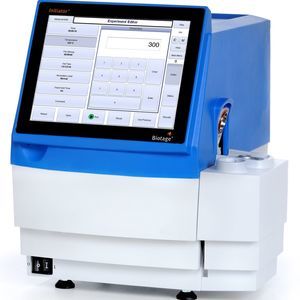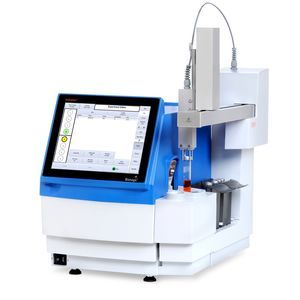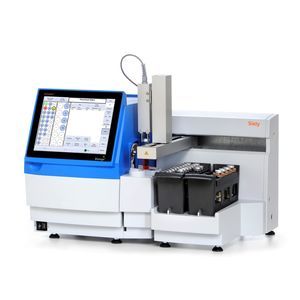
- Company
- Products
- Catalogs
- News & Trends
- Exhibitions
Glass laboratory funnel ISOLUTE®
Add to favorites
Compare this product
Characteristics
- Other characteristics
- glass
Description
ISOLUTE® Phase Separators are used to separate aqueous and chlorinated solvents following liquid-liquid extraction. The proprietary filtration device allows the flow of the organic solvent but holds up the aqueous layer (for up to 24 hours).
Benefits
ISOLUTE Phase Separators have been designed to rapidly separate chlorinated solvents from aqueous phases, under gravity.
The phase separators are available in a comprehensive range of column sizes (3, 6, 15, 25, 70 and 150 mL) and in convenient packages of 25-100 (depending on size).
Separation under gravity
Unlike other phase separation devices, no vacuum or positive pressure is required – the separation is achieved under gravity. The phase separator is impervious to aqueous solvents, but allows the passage of water immiscible solvents of a higher density than water.
Simpler
There are no moving parts, nothing to prime, its all achieved by hydrophobic/hydrophilic interactions, the cartridges arrive ready to use and are compatible with a wide variety of solvents.
The compound is partitioned, due to differences in solubility, between two immiscible liquids. The lower organic phase can pass through the frit, the upper aqueous phase physically cannot. There is an automatic cut-off at the organic/aqueous interface.
Phase Separators are designed to stand alone, working by unattended operation. Just open the lower tap (optio
Faster
Save time, reduce solvent, Phase Separator tubes are easier to store than glass sep funnels, and are geometrically designed to line up on a FlashVac or rack system, thus enabling the chemist to carry out multiple extractions in parallel.
Catalogs
Biotage® Extrahera™ Classic
24 Pages
Biotage® Extrahera™ HV-5000
20 Pages
Biotage® Extrahera™ LV-200
20 Pages
Related Searches
- Sample processor
- Automated sample preparation system
- Agitator
- Laboratory sample processor
- Microtiter plate
- Benchtop sample processor
- Benchtop stirrer
- 96-well microplate
- Digital stirrer
- Laboratory microplate
- Biotage laboratory evaporator
- Sample preparation homogenizer
- Benchtop homogenizer
- Electronic homogenizer
- Laboratory funnel
- Cell preparation system
- Laboratory extractor
- Washing sample processor
- Purification sample processor
- Vacuum evaporator
*Prices are pre-tax. They exclude delivery charges and customs duties and do not include additional charges for installation or activation options. Prices are indicative only and may vary by country, with changes to the cost of raw materials and exchange rates.










